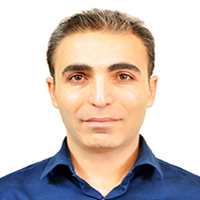The Mythological Analysis of Gāv, Based on the Archetypal Role of Cow in the Iranian Mythology
Author(s):
Article Type:
Research/Original Article (دارای رتبه معتبر)
Abstract:
In animist cultures, the chosen animal represents an eternal power, which needs to be ritually sacrificed to blessing or as atonement for sins. In an altar, sometimes the chosen man and the chosen animal substitute one another. In the Abrahamic religions, the successor sacrifice is often a camel or a sheep. But taking a look at pre-Islamic Iranian beliefs reveals that for the ancient Iranians the chosen animal is cow which in its archetypal role, as the sacrifice, blesses the nature. The purpose of the present article is to explore the mythological roots in Gāv (The Cow), a screenplay by Gholām-Hossein Sā'edi, with a comparative mythological approach. The research has been done by using descriptive-analytical and developmental method and its qualitative data have been collected in a documentary manner. The result of the research reveals that the mythological actors of this narrative are as follows: the shaman (Mash Islam), the nuns (Naneh Khanom and Naneh Fatemeh), the devilish powers (the Porusi bandits), the sacrificial animal (the cow) and the sacrificial man (Mash Hasan). After the cow dies, Mash Hasan substitutes for it, and eventually he suffers the same death as the cow. In this way, the border between the sacrificial animal and the sacrificial man is abolished.
Keywords:
Language:
Persian
Published:
Journal of Mytho- Mystic literature, Volume:16 Issue: 60, 2020
Pages:
173 to 202
https://magiran.com/p2178984
مقالات دیگری از این نویسنده (گان)
-
“A Survey on Representation of Binary Oppositions in the Arda Viraf Namah of Peshotan”
*, Afifeh Shahpir
Journal of Jelve-y Honar,



